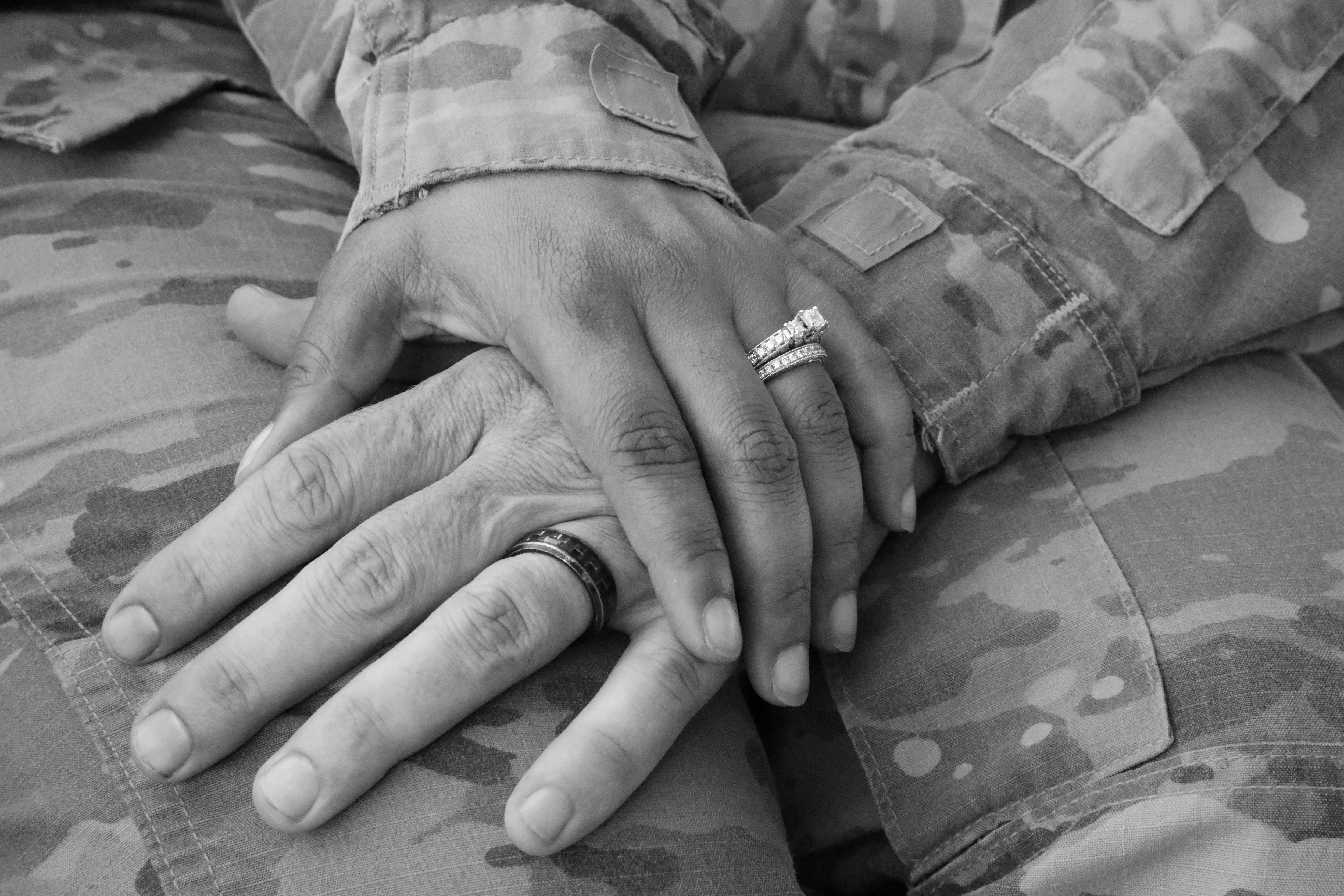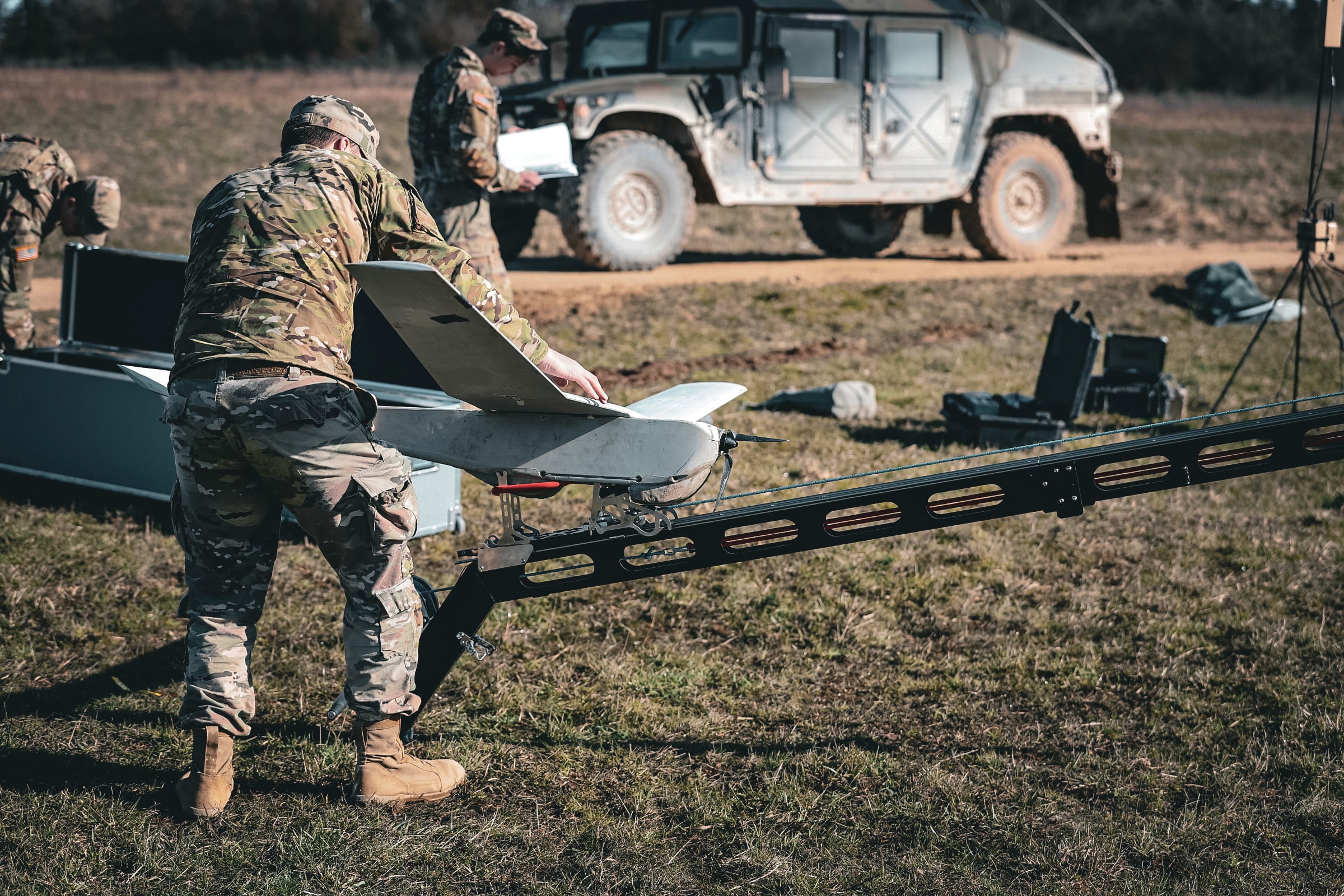About 88% of all dual-military service members have been able to co-locate with their spouse, but the services have work to do to ensure they’re balancing the needs of these families with the requirements of the mission as they make their assignment decisions, according to a report from the Department of Defense inspector general.
Dual-military couples serving in different branches — such as a soldier married to a sailor — are less likely to get assignments near each other than same-service couples. In those interservice couples, 72% were able to be co-located, compared to 89% of same-service couples as of September 2022.
The Defense Department hasn’t established a policy or process requiring coordination for co-locating dual-military couples serving in different branches of service, auditors found. It also hasn’t defined how to measure the effectiveness of the services’ assignment policies regarding dual-military couples, nor have the services developed their own metrics, auditors found.
Service officials haven’t provided any data to DoD about assignment policy exceptions.
“Without measuring the effectiveness of assignment policies, the services might not be fully addressing the needs of dual-military spouses, which can lead to a decline in the retention of the service members,” auditors stated in the June 8 report.
They also looked at the services’ exit and retention surveys from October 2017 through January 2023 and found that the impact of military service on family life is one of the top reasons for leaving the military. Not all the services’ survey questions had specific factors related to dual-military service members, so the auditors didn’t limit their review to those couples.
“Any time we can keep dual-military families together is a good thing,” said Kelly Hruska, government relations director for the National Military Family Association. “Dual-military families face enough challenges to their military service. The services should be able to coordinate to ensure families can be located at the same installation whenever possible.”
There were 77,432 service members in dual-military marriages. Auditors were able to analyze 70,539 of them; another 6,893 service members didn’t have ZIP code information in their personnel records for the analysis. The Defense Manpower Data Center compared ZIP code coordinates to determine if the service members were within 50 miles of each other.
The Army, Navy, Air Force and Marine Corps were able to co-locate the majority of active duty dual-military spouses as of September 2022.
| SERVICE (active duty) | Co-located dual-military spouses (No.) | Co-located dual-military spouses (%) | Not co-located dual-military spouses (No.) | Not co-located dual-military spouses (%) | Total dual- military spouses (No.) |
|---|---|---|---|---|---|
| Army | 23,365 | 85% | 4,178 | 15% | 27,543 |
| Navy | 11,103 | 87% | 1,610 | 13% | 12,713 |
| Air Force | 25,364 | 91% | 2,416 | 9% | 27,780 |
| Marine Corps | 2,066 | 83% | 437 | 17% | 2,503 |
| Total DoD | 61,898 | 88% | 8,641 | 12% | 70,539 |
| Source: DoD IG |
The data didn’t include information about why dual-military members weren’t co-located. Service officials told auditors that several factors may come into play. For example, some dual-military spouses choose not to be co-located for because they find better opportunities for career growth if they remain apart for a while. The timing of when members gets married compared to the date of their assignment, or the lack of different service installations within the same geographic area, can also influence such decisions.
Based on the recommendations from the DoD Inspector General’s Office, defense officials agreed to include requirements to review and analyze statistics about dual-military couples’ co-location; review the results of exit and retention surveys, and use the information to adjust policies as needed, according to the report. Officials expect their revised policy to be published in fiscal 2024, according to a response signed by Gilbert R. Cisneros Jr., undersecretary of defense for personnel and readiness. Work will begin on the revised policy within a few months, he stated.
Defense officials will also revise the policy regarding situations when the services aren’t able to accommodate dual-military couples serving in different branches, as recommended by the DoD IG.
“Having a higher level of oversight above the individual service career monitor/managers will ensure that a thorough review has been done prior to placing interservice dual-military couples in different locations,” Cisneros’ response stated.
A greater percentage of same-service dual military spouses were co-located than interservice spouses of September 2022.
| SERVICE (active duty) | Same-service dual-military spouses co-located (%) | Different service dual-military spouses co-located (%) |
|---|---|---|
| Army | 85% | 72% |
| Navy | 90% | 69% |
| Air Force | 92% | 75% |
| Marine Corps | 88% | 71% |
| Source: DoD IG |
All the service branches have processes in place that allow dual-military service members to request being stationed within a 50- to 90-mile radius of each other. In addition, when an assignment manager decides that the branch of service can’t accommodate a co-location request, the request is subject to a review at a higher level, based on Army, Navy and Air Force rules. This also applies to situations involving spouses who serve in different branches of the military.
The services’ co-location review process when a request can’t be accommodated:
Army: A division chief, typically a colonel, must approve a waiver when the Army can’t co-locate a dual-military spouse.
Navy: The assistant commander of Navy Personnel Command, typically a rear admiral, must approve any assignment preventing co-location.
Air Force: The commander of the Air Force Personnel Command, typically a major general, must review any disapproved co-location request.
Marine Corps: The service doesn’t currently provide for a higher-level review, but officials told auditors they plan to require a higher-level review when the Marine Corps can’t accommodate co-location requests, and expect to have that policy updated by the end of 2023.
According to the IG report, however, that updated instruction isn’t expected to include additional oversight from a higher-level authority when the assignment manager determines it’s not possible to co-locate interservice spouses.
Karen has covered military families, quality of life and consumer issues for Military Times for more than 30 years, and is co-author of a chapter on media coverage of military families in the book "A Battle Plan for Supporting Military Families." She previously worked for newspapers in Guam, Norfolk, Jacksonville, Fla., and Athens, Ga.










